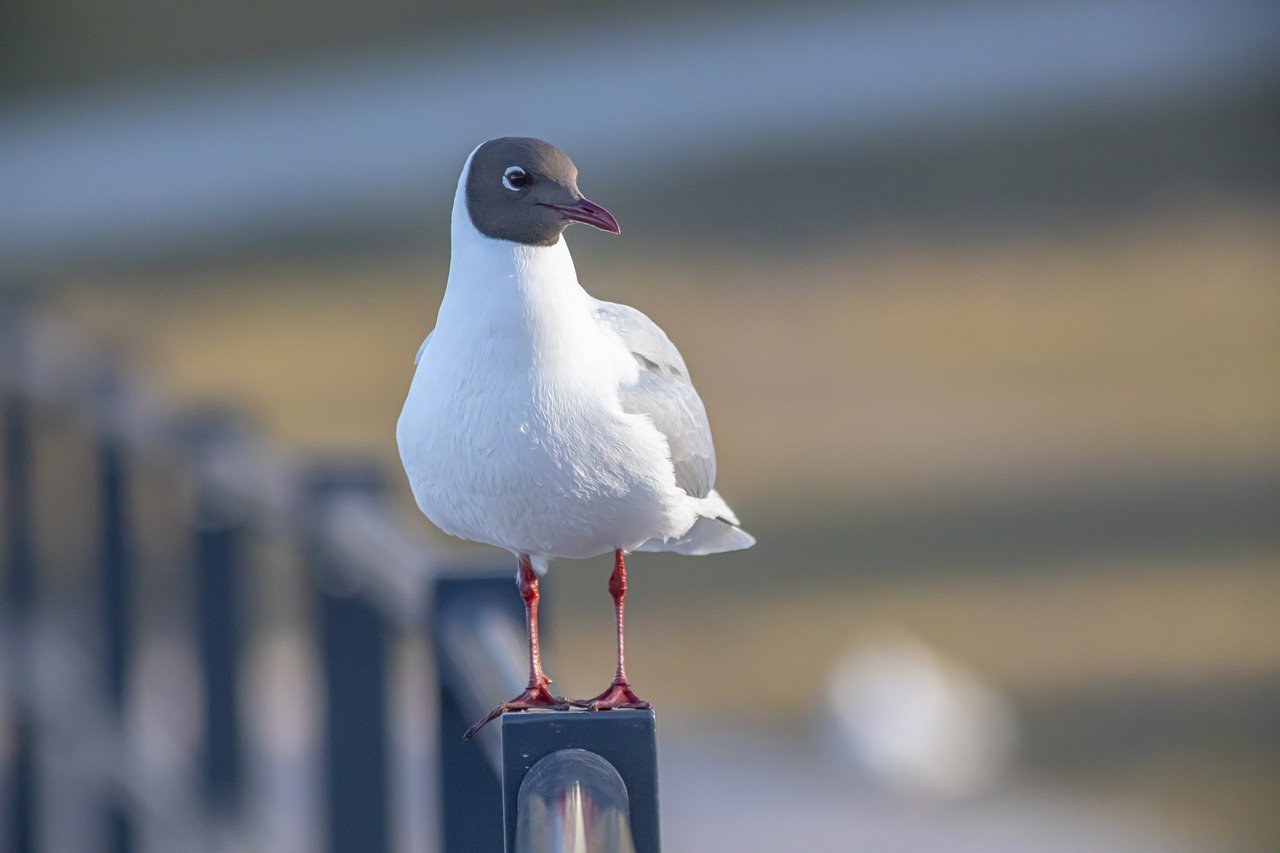The Black-headed Gull (Larus ridibundus) is a common and widespread gull species found across much of Europe and Asia. Despite its name, the black head is only present during the breeding season. Here are some detailed characteristics and information about the Black-headed Gull:
Appearance
- Size: The Black-headed Gull is a medium-sized gull, measuring about 35 to 39 centimeters in length with a wingspan of 86 to 99 centimeters.
- Weight: They typically weigh between 200 to 400 grams.
- Coloration:
- Breeding Plumage: During the breeding season, adults have a chocolate-brown head (not truly black), which contrasts with their white body. The wingtips are black with white “mirrors.”
- Non-breeding Plumage: In the non-breeding season, the head becomes white with a dark spot behind the eye, giving a hooded appearance.
- Juveniles: Juveniles have a mottled brown and white plumage, which gradually changes as they mature.
Habitat
- Preferred Habitats: Black-headed Gulls are versatile and can be found in a variety of habitats, including coastal areas, inland lakes, rivers, wetlands, farmland, and urban areas.
- Geographic Range: They are widespread across Europe, Asia, and parts of North America. Many populations are migratory, moving southward during the winter months.
Behavior
- Social Structure: Black-headed Gulls are highly social birds, often seen in large flocks, especially outside the breeding season. They are known for their noisy and gregarious nature.
- Feeding Behavior: They are opportunistic feeders, consuming a wide range of food items including insects, fish, crustaceans, worms, and even human food scraps. They forage by walking, swimming, or catching insects in flight.
- Vocalizations: They have a variety of calls, with the most common being a harsh, laughing “kree-ar” or “kree.”
Reproduction
- Breeding Season: The breeding season typically starts in late spring, around April to June.
- Nesting: Black-headed Gulls nest in colonies, often with other gull species or waterbirds. They build their nests on the ground, usually in reed beds, marshes, or on islands in lakes.
- Eggs and Incubation: Females lay 2 to 3 eggs, which are incubated by both parents for about 23 to 26 days.
- Fledging: The chicks are precocial, meaning they are relatively mature and mobile shortly after hatching. They fledge at about 5 to 6 weeks of age.
Conservation Status
- Population: The Black-headed Gull is currently listed as Least Concern by the IUCN, with stable or increasing populations in many areas.
- Threats: While generally adaptable, they face threats from habitat loss, pollution, and human disturbance, particularly in breeding areas.
Interesting Facts
- Adaptability: Black-headed Gulls are highly adaptable and can thrive in a wide range of environments, from natural wetlands to urban areas.
- Migration: Many populations are migratory, with some birds traveling significant distances between breeding and wintering grounds.
- Lifespan: They can live up to 15 years or more in the wild, though many succumb to predation, disease, or environmental hazards.
Identifying Larus ridibundus
- Distinctive Features: During the breeding season, the chocolate-brown head is a key identifying feature. In the non-breeding season, look for the white head with a dark spot behind the eye. Their medium size, white body, and black wingtips with white mirrors also aid in identification.
- Behavioral Traits: Observing their social behavior, vocalizations, and feeding habits can help in distinguishing them from other gull species.
In summary, the Black-headed Gull (Larus ridibundus) is a versatile and common gull species known for its seasonal changes in head coloration and its adaptability to various environments. Found across much of Europe and Asia, this species plays an important role in its ecosystem and is a familiar sight in many coastal and inland areas.
Visited 861 times, 4 visit(s) today
Views: 1299
Subscribe to the newsletter:
